12 Motorcycle Accident Statistics in Australia: 2025 Update
-

- Last updated:
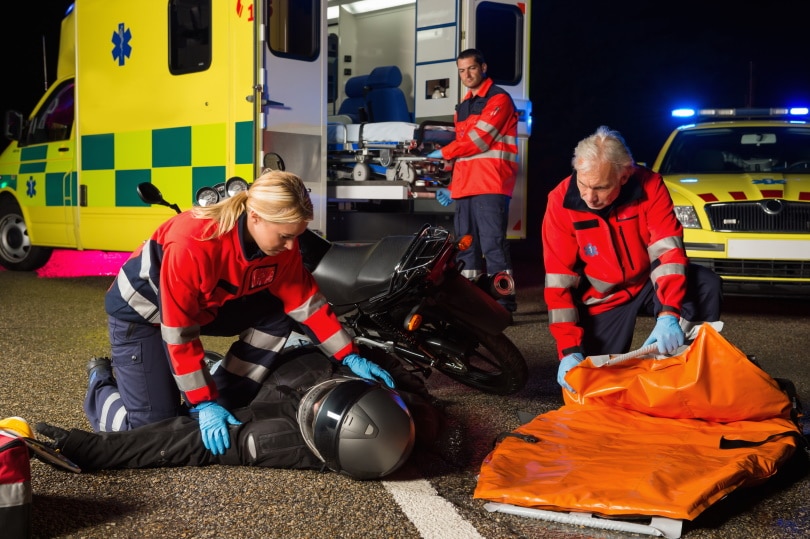
Note: This article’s statistics come from third-party sources and do not represent the opinions of this website.
Australia has it all: narrow city streets, busy highways, and off-roading trails in the wilderness. That’s why motorcycles are so popular in the country. Fast, maneuverable bikes are all about freedom and the thrill of exploration. However, the two-wheeled vehicles can also be extremely dangerous.
Today, we want to share the 12 most important (and troubling) motorcycle statistics and facts in Australia. We divided the list into injury statistics, general facts, and statistics on states and LGAs to make it easier to navigate through all the data that our research team has put together. Put your helmet on, and let’s take a look!
Click below to jump ahead:
The 12 Motorcycle Accident Statistics in Australia
- In 2021, 229 people died in motorcycle accidents in Australia.
- 2,081 people died in motorcycle accidents in Australia from 2011 to 2020.
- Riders in the 40–64 age group are at the highest risk of getting injured or dying in a motorcycle fatality.
- Motorcycles make up 19% of all road fatalities in Australia.
- 80% of all motorcycle accidents in Australia lead to injuries or death.
- The fatality rate per 100K registered motorcycles is 26.
- 87% of motorcyclists that die on the road wear a helmet.
- Motorcycle drivers have a 30 times higher chance of being killed in a crash vs. car occupants.
- Motorcycle drivers in Australia cause 51% of multi-vehicle accidents.
- 96% of Victorian bike drivers and passengers that have died over the last 5 years were male.
- Brisbane is the motorcycle fatality capital of Australia (18 fatalities in 2011–2020).
- In Queensland, pillion passengers only make up 1.3% of motorcycle fatalities.
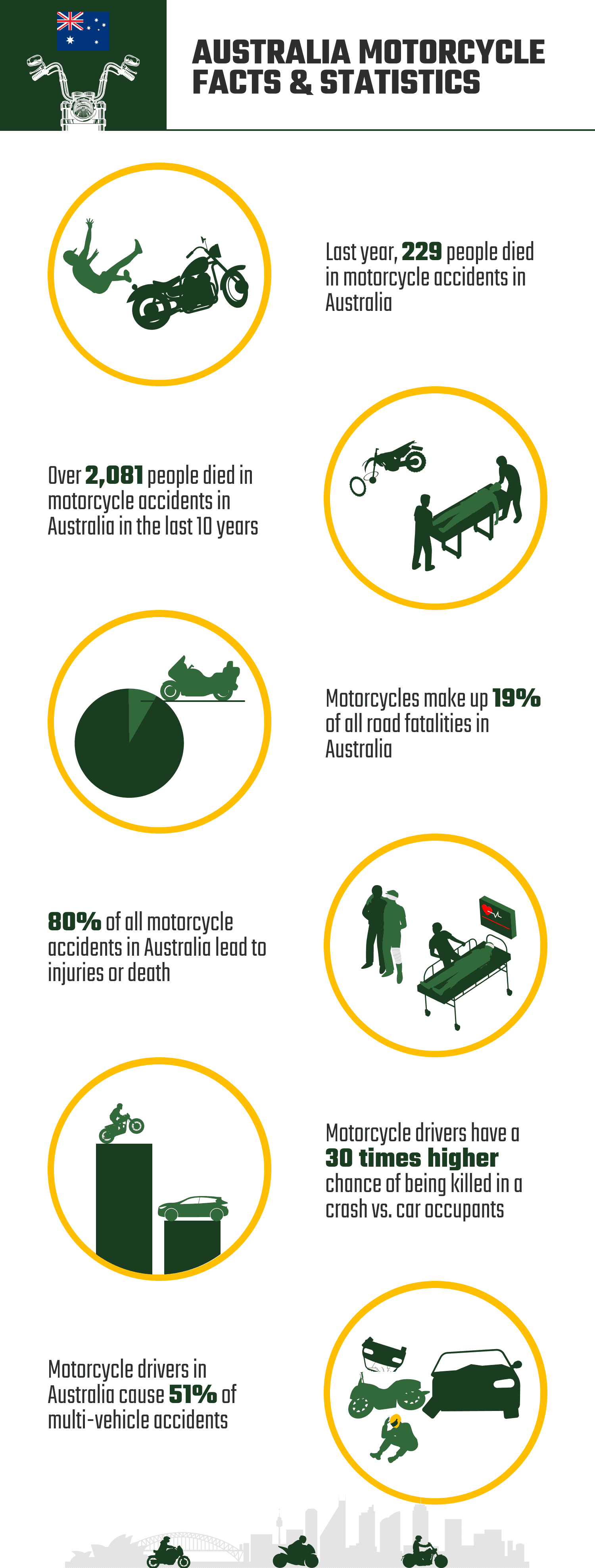
Injuries and Fatalities Statistics
1. In 2021, 229 people died in motorcycle accidents in Australia.
(Statista)
Despite the Australian government’s attempts to keep the number of accidents on the road to a minimum, in 2021, fatal crashes took the lives of 229 motorcyclists. Compared to 2020, that’s a 23% increase in the death rate. The difference was even bigger in the first six months of 2021: 43%.
Now, because of the COVID-19 restrictions, 2020 was one of the safest years for riders. However, if we look at the total number of fatal motorcycle accidents in Australia from 2015–2021, we’ll see that the rate has increased. In 2015, only 196 bike drivers died in accidents on the road.
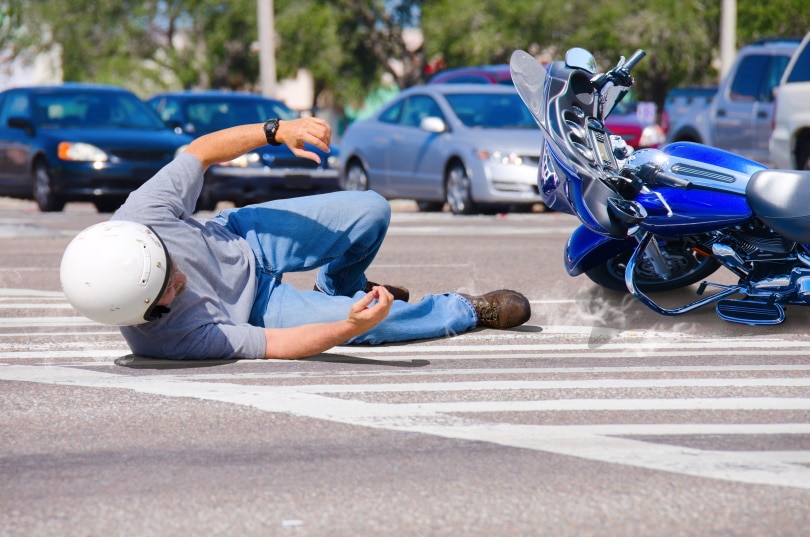
2. 2,081 people died in motorcycle accidents in Australia from 2011 to 2020.
(Bitre, CARRS)
Speaking of the bigger picture, over the past decade (2011–2020), 2,081 people became victims of motorcycle accidents. That means that, on average, bikes kill 200 people each year. While this is alarming, it is almost six times lower than the total number of road crash deaths. In 2021, 1,123 people died on Australian roads.
3. Riders in the 40–64 age group are at the highest risk of getting injured or dying in a motorcycle fatality.
(Bitre, CARRS)
While you might assume that younger riders are more reckless, statistics analysis says otherwise. Besides, more people in the 40–64 age category own motorcycles compared to, let’s say, the 17–25 group. In 2020, motorcycle fatalities cut the lives of 84 riders aged 40–64. That was a slight decrease compared to 2019 (88 deaths).
It was an even bigger improvement over 2016 (119 fatalities, the worst year so far). Most crashes involving riders under 40 happened in non-urban areas. In contrast, for bikers younger than 40, urban areas were more dangerous. If we compare the 40–64 age group to other groups, we will see that in 2020, motorcycle accidents killed 60 riders aged 26–39 and 29 riders aged 17–25.
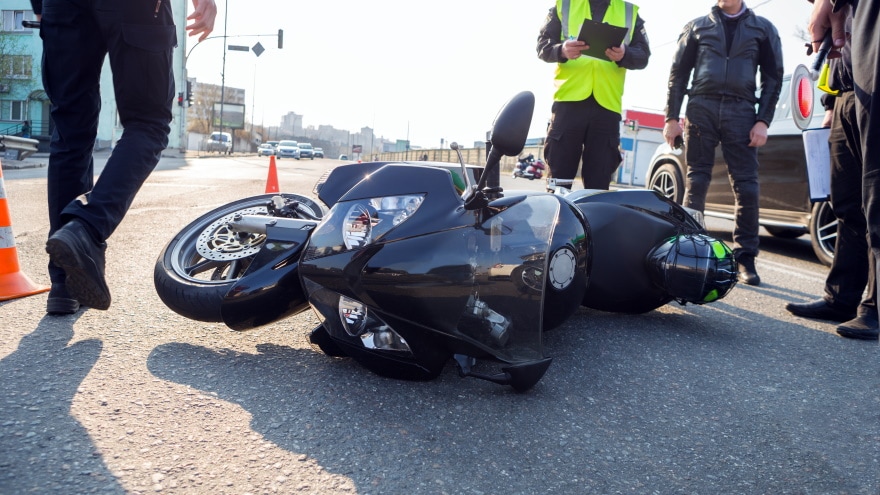
4. Motorcycles make up 19% of all road fatalities in Australia.
(Accident Claims Lawyers)
There are only a little over 900,000 registered motorcycles in Australia, which accounts for 5.7% of all passenger vehicles. However, they account for 19% of all road fatalities in the country. This is true not only for Australia but also for the vast majority of countries around the world. Motorcycles aren’t nearly as safe compared to cars, especially when driven at above-average speeds.
5. 80% of all motorcycle accidents in Australia lead to injuries or death.
(NBC Comedy Playground)
If you get into an accident while driving a bike, you will have an 80% chance of getting injured or dying. Head injuries are the top cause of fatal accidents. Again, Australia isn’t any different from the rest of the world in this regard. To put things into perspective, only 20% of car crashes injure or kill someone (the driver or one of the passengers).
Most motorcycle accidents in Australia are caused by four-wheeled vehicles making a quick left-hand turn. As much as 42% of accidents happen because of this! So, keep your eyes open for potentially hazardous cars on the road.

6. The fatality rate per 100K registered motorcycles is 26.
(Bitre)
In 2021, the fatality rate for bike riders was 26 per 100,000 motorcycles. The Northern Territory registered the worst rate (85 per 100,000 two-wheeled vehicles). In contrast, the Australian Capital Territory didn’t have a single motorcycle death that same year. In 2020, the rate throughout the country was 21; in 2019, Australia had a fatality rate of 24.
This hasn’t changed much since 2012. Back then, the rate was 31, but after that, it never exceeded 30. For comparison, the fatality rate for cars in Australia in 2021 was 4/100,000.
General Accident Statistics
7. 87% of motorcyclists that die on the road wear a helmet.
(Bitre, CDC)
The head of a motorcycle rider is the most vulnerable part of the body. However, according to the Bureau of Infrastructure and Transport Research Economics (Bitre), 87% of riders who die in fatal accidents have a helmet on. For example, of the 187 deaths in 2020, only 18 riders weren’t wearing helmets. In Australia, it’s mandatory to wear one.
More importantly, helmets do keep us safer. According to the CDC, they protect 41% of passengers and 37% of riders from death.
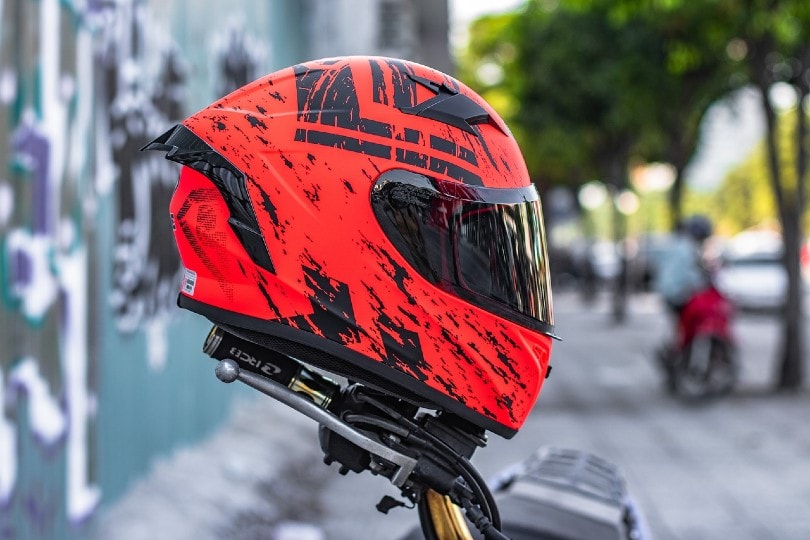
8. Motorcycle drivers have a 30 times higher chance of being killed in a crash vs. car occupants.
(CARRS)
There’s no way of sugarcoating this; motorcycles are incredibly dangerous. If you were to be on a bike during a crash, the chance of dying would be 30 times higher than when riding in a car. The rate for gruesome injuries is even more striking—41 times higher. Even if you are an amateur driver, you’ll still be immeasurably safer inside a four-wheeled vehicle.
9. Motorcycle drivers in Australia cause 51% of multi-vehicle accidents.
(CARRS)
The Center for Accident Research and Road Safety (CARRS) claims that only 30% of multi-vehicle accidents are caused by cars. Usually, they block or hit a motorcycle at an intersection, denying it the right of passage. However, bike riders are responsible for 51% of these crashes. In approximately 18% of cases, both drivers are to blame.

States and LGAs Accidents Statistics
10. 96% of Victorian bike drivers and passengers that have died over the last 5 years were male.
(TAC, Bitre)
Of all the drivers and passengers that have lost their lives to motorcycle accidents in Victoria over the last 5 years, 96% were men. The same is true for injuries; only 7% of injured individuals were women. Speaking of the gender differences in Victoria, 87% of motorcycle license holders are also male. The gap isn’t nearly as big if we look at total road crash deaths.
In 2021, of the 1123 fatal accidents, 848 involved men, while 272 involved women.
11. Brisbane is the motorcycle fatality capital of Australia (18 fatalities in 2011–2020).
(Bitre, Budget Direct)
Brisbane is the third most-populated city in Australia, right after Sydney and Melbourne. Home to 2.5 million citizens, it’s known as the “fatality capital” for motorcycle riders. In the 2011–2020 period, 18 motorcyclists died there. Moreton Bay is the close second with 15 fatal cases (both cities are located in Queensland).
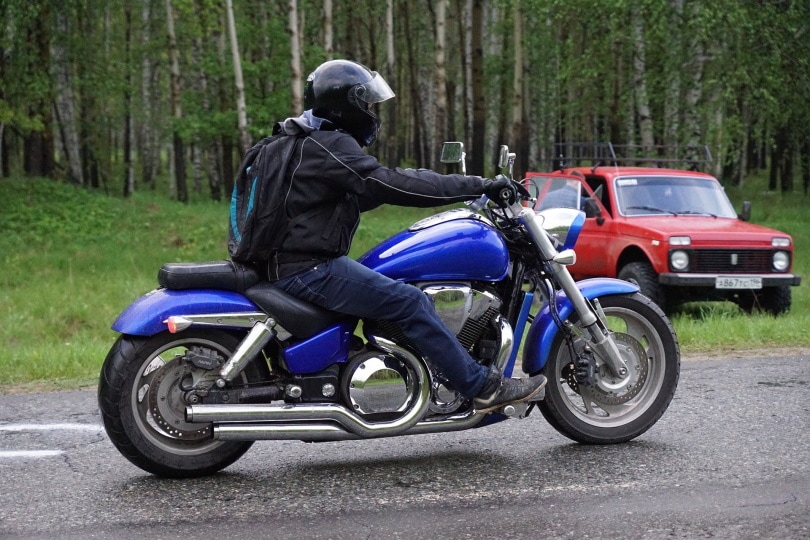
12. In Queensland, pillion passengers only made up 1.3% of motorcycle fatalities.
(CARRS)
If you’re used to being the passenger on a motorcycle, your chances of dying in a crash are very low. In Queensland, pillion passengers account for 1.3% of fatalities in motorcycle accidents. That’s why it’s so important for the rider to put the necessary protective gear on; they’re at a higher risk of getting injuries and dying.
Frequently Asked Questions About Motorcycle Accidents
Are Motorcycles Popular in Australia?
Yes, Australians are big fans of motorcycles. The country is home to 25.6 million people, with 2.2 million licensed drivers in Australia. As for the number of registered motorcycles, it’s around 913,000, which is also quite impressive. In 2021, local dealerships managed to sell 123,500 motorcycles. That’s a 13.4% boost compared to 2020. In 2020, the prices of two-wheeled vehicles in Australia spiked.
Today, with the virus largely contained and shipping delays partially fixed, the supply is there, but the prices are still high. You will have to wait for quite some time to get your motorcycle. This year, the market is expected to reach $770 million, with the revenue volume hitting $1 billion by 2026 (Statista, FCAI, MotoFomo).
How Do You Avoid Accidents on a Motorcycle?
Follow the set speed limitations. The slower you drive, the more time you’ll have to react to hazards on the road. Maintain a clear line of vision. Make a habit of always looking behind at crossroads and intersections. Navigating through parked and moving cars or sharing a lane with a vehicle should also be off-limits. Next, don’t underestimate the power of regular maintenance.
Make sure your bike and gear are in perfect shape. The Australian government has done a lot to help motorcyclists avoid injuries on the road. They’ve introduced many initiatives, such as targeted safety campaigns, extensive training for bikers, and infrastructure improvements. On top of that, the authorities have made ABS systems mandatory in new motorcycles (Road Safety, Oal-Law).
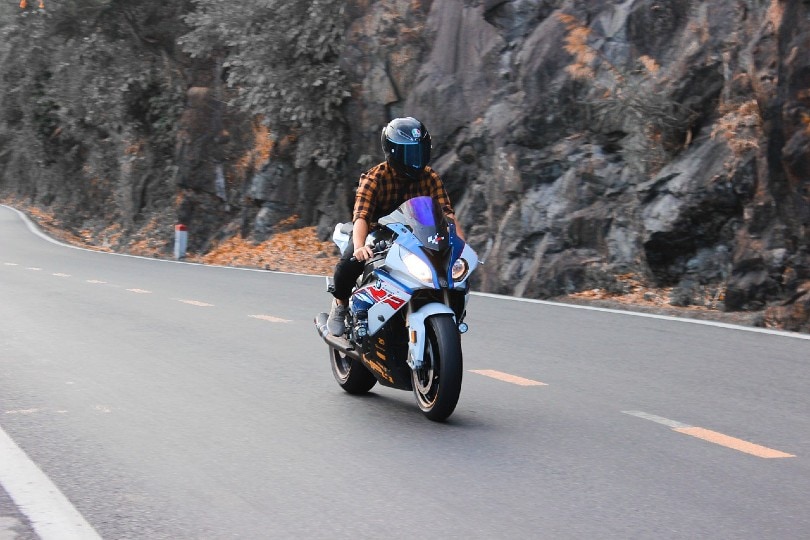
You Got Into a Motorcycle Accident. What Should You Do?
- The biggest mistake that most bike owners make after getting into an accident is they don’t take their injuries seriously. Even if you were lucky enough to get away with a couple of cuts and bruises, having yourself checked by a paramedic is still necessary. The adrenaline rush will probably numb the pain. A doctor, in contrast, will be able to reveal any potential injuries that need immediate medical help.
- Don’t remove your helmet or safety gear before the emergency services arrive. Stay away from the bike, and do not attempt to move it to the side. Instead, get to safety.
- If you’re feeling okay, grab your phone and document everything, including the damage to your bike and the plate number of the car you crashed into. Show it to the police when they arrive at the scene.
- Next, file an insurance claim and contact your lawyer or hire one. They will help you get the best compensation.
- Don’t throw medical and repair bills away; hand them over to the lawyer.
- Never accept any money (a settlement) from the at-fault person’s insurance company (like the car driver). Instead, let your lawyer negotiate a better deal for you.
- In fact, don’t even talk to insurance investigators on your own, as they might trick you into saying things they want. (Motorcycle Accident, Ride.Vision).
What’s the Speed Limit for a Motorcycle in Australia?
That depends on the area. During school days, the speed limit is 40km/h. If you drive through residential environments, do not go over 50km/h. For freeways, the speed limit is in the 100–110km/h range. In some parts of the country, motorcycle drivers can 130km/h. (Hoodsmand).
Is Lane Filtering Legal in Australia?
The short answer is yes; you won’t be fined for doing that anywhere in Australia. You will, however, have to be driving at a low speed (<30km/h). If you exceed that speed limit, you’ll violate the road rules. That’s because you will be doing lane splitting instead of lane filtering. You’ll have to be a licensed motorcyclist to be able to lane filter.
And in most states, lane filtering isn’t allowed if the traffic lanes are moving in the opposite direction. In some parts of Australia, driving between a vehicle (parked or moving) and the curb/roadside is also punishable by law. To stay out of trouble, take a moment to check the local regulations before hopping on your bike (Shine Lawyers).
Conclusion
If you live in Australia, you probably own a motorcycle or know someone who does. Australia has one of the most diverse landscapes in the world. Bikes are perfect for conquering rainforests, deserts, and mountains. Unfortunately, they are a hazard waiting to happen. Even if you’re a pro driver with years of experience, it’s easy to get into an accident.
As we learned today, the accident statistics are pretty alarming. So, always check the bike before hitting the road, ensure your gear is in decent shape, and never speed up. We hope the statistics and facts we discussed today will help you become a more conscious driver. Stay safe out there!
- See Also: Truck Accident Statistics in Australia
Featured Image Credit: CandyBox Images, Shutterstock
Contents

